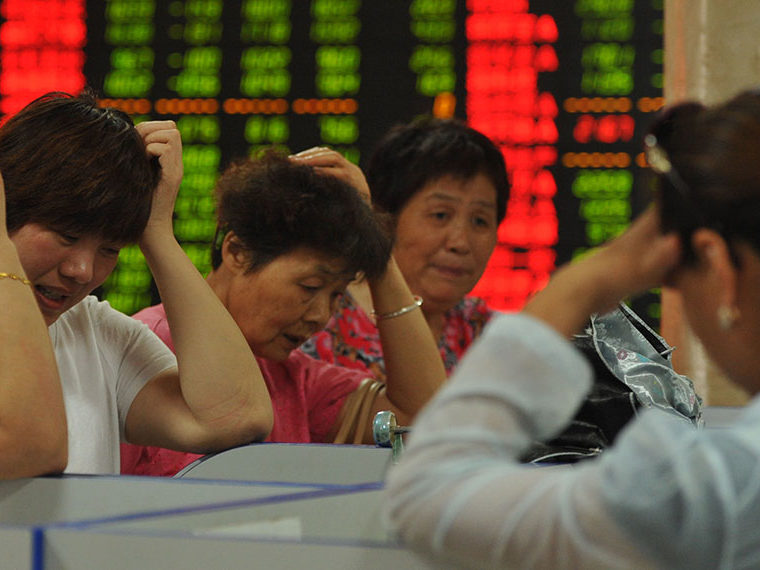Active traders lose their edge as a marital breakup approaches
Going through a divorce can leave you an emotional wreck, but at least there’s the relief of throwing yourself into work or a hobby for distraction.
Unless, of course, you’re a professional stock trader. A 2016 paper published in the Journal of Financial Economics found that hedge fund alpha — the excess return relative to a benchmark index — was an annualized average 4 percentage points lower in a six-month window (pre- and post-divorce) when the manager was going through a split. Underperformance continued for another two years, though at about half the magnitude.
A more recent working paper suggests active individual investors also lose their edge as a marriage falls apart.
Opt In to the Review Monthly Email Update.
The unique structure of the individual stock market in Finland provides helpful data for researchers to study the potential impact of marriage problems on trading success. Married Finnish couples rarely have joint investment accounts. And the transfer of assets as the result of a divorce is assigned a specific code by the national stock market clearinghouse, which is different than, say, a transfer or sale due to death.
Active Trader’s Bermuda Triangle: 1 to 3 Years Before Divorce
University of Sydney’s Andrew Grant and P. Joakim Westerholm, UCLA Anderson’s Avanidhar Subrahmanyam and La Trobe University’s Petko S. Kalev had access to the trading records of more than 1,400 Finns who divorced between 2000 and 2014.
They created three milestones for each divorced investor with a stock trading account.
- 5 years to 4 years before divorce: This served as a control period of sorts, on the assumption that the dynamics of moving toward divorce were not yet in play.
- 3 years to 1 year prior to divorce: The run-up period where relationship distraction is likely flaring.
- 1 year prior to divorce through 1 year after divorce: This two-year window likely captures the period when most Finnish couples are actively in the process of divorcing. Based on input from a Finnish family-law expert, the researchers report that the median time from when a couple files for divorce to the division of stock assets (the date of divorce in this study) is eight months. The actual court finalization can range from four months prior to the stock transfer to six months after the division of stocks. (Finnish law permits the transfer of assets prior to a final court decree.)
Individuals whose trading activity in their five-year window landed in the top quartile of all divorced traders at the same juncture were deemed to be active traders.
They were apparently pretty good at what they were doing.
The researchers found that during this period, the stocks bought by active traders gained an average of 8.9% while the stocks they sold gained 5.8%. That 3.1 percentage point gap is a lot better than the -0.6 percentage point gap for the nonactive traders (that is, for nonactive traders what they sold did better than what they bought, on average.)
But the active traders seem to lose their touch when the distraction of a busted relationship and the move toward divorce moves a bit more front and center.
In the period starting three years out from divorce and ending a year prior to divorce, the average return of what the active traders bought was 0.6% a year, while what they sold did better, gaining an average of 2.6%. That’s quite a swing: Between the control period (five years out) to nearing divorce, their skill seems to have morphed from a 3.1 percentage point annualized value-add to a -2.0 percentage point drag.
During this closing-in-on-divorce period, the nonactive trader actually did better than they had during their D-minus-five-years period. Their buys (+5.6% on average) did better than their sells (+3.7% on average). Go figure.
Amid the Divorce, Active Traders Seem Less Distracted
Once the decision to divorce is likely already made, and the dissolution is in motion, the active traders seem to have the space and time to be less distracted. During the two-year window where divorce actually happens (one year prior to the finalization, and one year past) the active traders regain their touch: Their buys gained an average annualized 2.4% and their sells were flat.
“This indicates that the distraction of a troubled relationship is mitigated as the divorce is finalized, leading to a restoration of trading efficacy for the actively trading divorced investors,” the authors write.
Alas, the nonactive traders also revert to prior form during the divorce window: What they bought lost an annualized average of -0.7%, and what they sold gained 2.9%. The sales were not part of the divorce agreement, but rather a trading choice made after the divorce transfer of assets.
The researchers suggest that the wide negative gap for the nonactive traders during the divorce window could be indicative of “fire sales” as they reorganize their financial life post-marriage.
Featured Faculty
-
Avanidhar Subrahmanyam
Distinguished Professor of Finance; Goldyne and Irwin Hearsh Chair in Money and Banking
About the Research
Grant, A., Westerholm, P.J., Subrahmanyam, A., Kalev, P.S. (2020). Retail Trading Activity and Major Lifecycle Events: The Case of Divorce. http://dx.doi.org/10.2139/ssrn.2445073.






